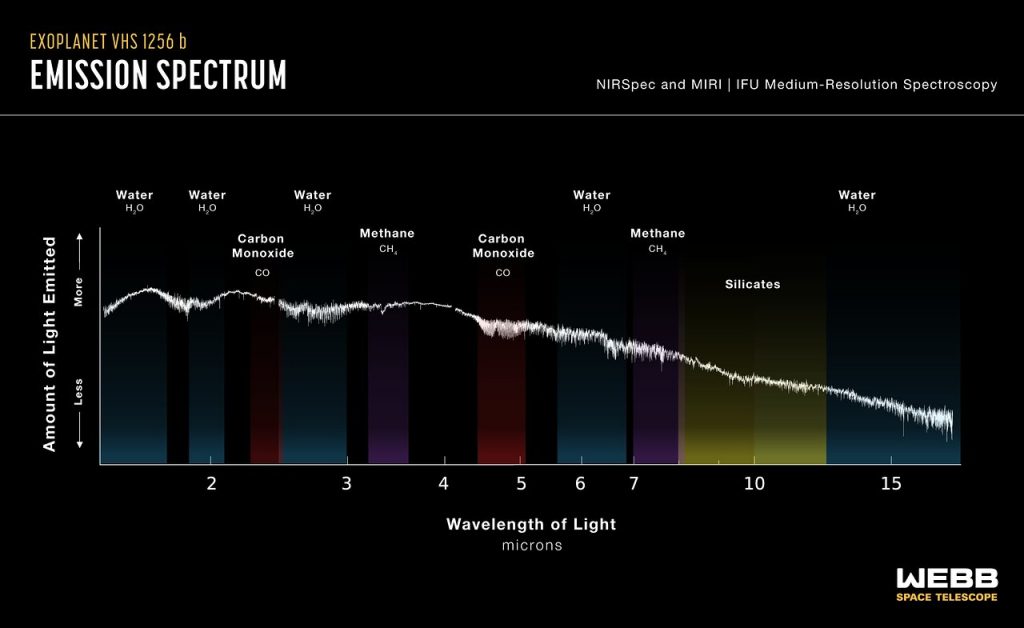The James Webb Space Telescope examined the upper atmosphere of the young exoplanet VHS 1256 b.
VHS 1256 b revolves around not one, but all at oncetwo stars, but it is about four times farther from its stars than Pluto is from the Sun. Such a large distance leads to the fact that the light of the planet does not mix with the light of its stars, and researchers can observe the spectrum of radiation reflected by the atmosphere in high detail.
Upper Atmosphere VHS 1256 bresearchers discovered silicate clouds. This planet has relatively little gravity compared to more massive brown dwarfs, so silicon clouds can rise higher and persist in the upper atmosphere, where Webb can detect and observe them.
 Analysis of the spectrum reflected by the planet's atmosphere VHS1256 b light. Image: NASA, ESA, CSA, J. Olmsted (STScI), B. Miles (University of Arizona), S. Hinkley (University of Exeter), B. Biller (University of Edinburgh), A. Skemer (University of California, Santa Cruz)
Analysis of the spectrum reflected by the planet's atmosphere VHS1256 b light. Image: NASA, ESA, CSA, J. Olmsted (STScI), B. Miles (University of Arizona), S. Hinkley (University of Exeter), B. Biller (University of Edinburgh), A. Skemer (University of California, Santa Cruz)
The study showed that in the upper layersatmosphere, where the temperature is 830 ° C, clouds are formed, consisting of both large and extremely small particles of silicate dust. Smaller silicate particles in its atmosphere are like tiny smoke particles, while larger particles are like very hot, very small sand particles, the researchers note. They believe that the silicates circulating in these clouds periodically become too heavy and rain down into the depths of the planet's atmosphere.
In addition to sand, the researchers also found inthe planet's atmosphere traces of water, methane and carbon monoxide and confirmed the existence of carbon dioxide in the atmosphere. This is the largest number of different molecules ever identified simultaneously on a planet outside of our solar system. The researchers believe that further observations will help to learn more about the stone rain of a distant exoplanet.
Read more:
Scientists believe that the shape of the universe is not what everyone thinks
NASA helicopter showed sunset on Mars. It doesn't look like earth.
Named a plant whose extract helps to lose weight without side effects
On the cover: an artistic illustration of the planet VHS 1256 b and its distant stars. Image: NASA, ESA, CSA, J. Olmsted (STScI)